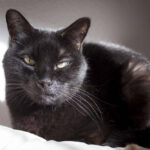Driven by a desire to immortalize his feline companion, Orville, inventor Mr. Jansen embarked on an extraordinary project that has captured global attention. Far from a mere drone enthusiast, Jansen’s creation, the “Cat Drone,” stems from a deeply personal place – a tribute to his beloved cat named after aviation pioneer Orville Wright. This unique invention, also known as the Orvillecopter, is not just about remote-controlled flight; it’s a testament to grief, creativity, and the desire to create a truly unforgettable memorial.
Jansen explains, “It’s not about drones for me. I don’t really like drones or remote-controlled flying.” His inspiration was much more profound. “What I wanted back then was a monument to my cat who was named after Orville Wright, one of the Wright brothers.” This desire to honor Orville in a fittingly airborne fashion sparked an unusual idea. “In that train of thought, the monument for my deceased cat had to fly. I drew a drawing of a cat with a blade out of its back and said, ‘Let’s make a helicopter.'”
To bring his vision to life, Jansen, who was working as a builder at the time, sought out expertise in drone technology. “I was working as a builder back then and I said to one of the engineers, ‘Does anyone here fly drones?’ and that’s when I met Arjen and now we are partners.” This collaboration proved crucial in transforming the initial concept into a functional and awe-inspiring reality.
However, Jansen and his partner Arjen are not aiming for mass production of animal drones. They emphasize a selective and artistic approach. Addressing potential future requests, Jansen humorously notes the complexities involved, “I now have to think about how much it will cost to make a golden retriever fly – I have no idea.” He also highlights the labor-intensive nature of each creation, stating, “It takes weeks to get the animal in the air so it would be nice if people didn’t send me frozen animals.” For Jansen, the focus is on the artistic and engineering challenge, “I just want a skin that we can build the copter around.” This suggests a preference for working with prepared taxidermied animals rather than fresh specimens, streamlining the process and ensuring respectful handling.
The development of Orville the cat drone was a significant undertaking. “We worked on Orville’s copter for a year, on and off, and it cost €2,500 (£2,100) in materials alone without charging for countless expert man hours.” This investment of time and resources underscores the dedication and craftsmanship involved in creating this unique flying tribute.
While currently employed fitting solar panels, Mr. Jansen harbors hopes that this inventive endeavor will gain traction. The “cat drone,” or Orvillecopter, stands as a remarkable example of how personal grief can inspire extraordinary creativity and innovation, pushing the boundaries of both art and technology in the realm of unique memorials.

